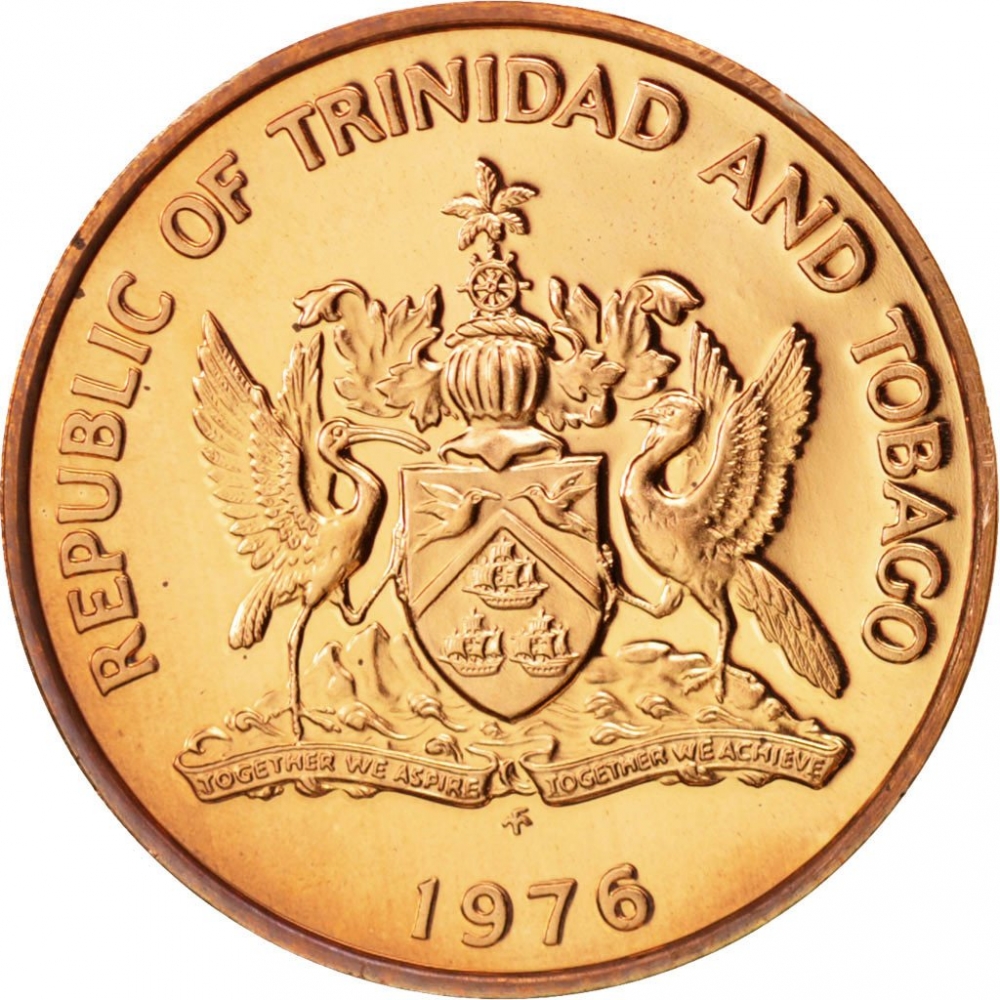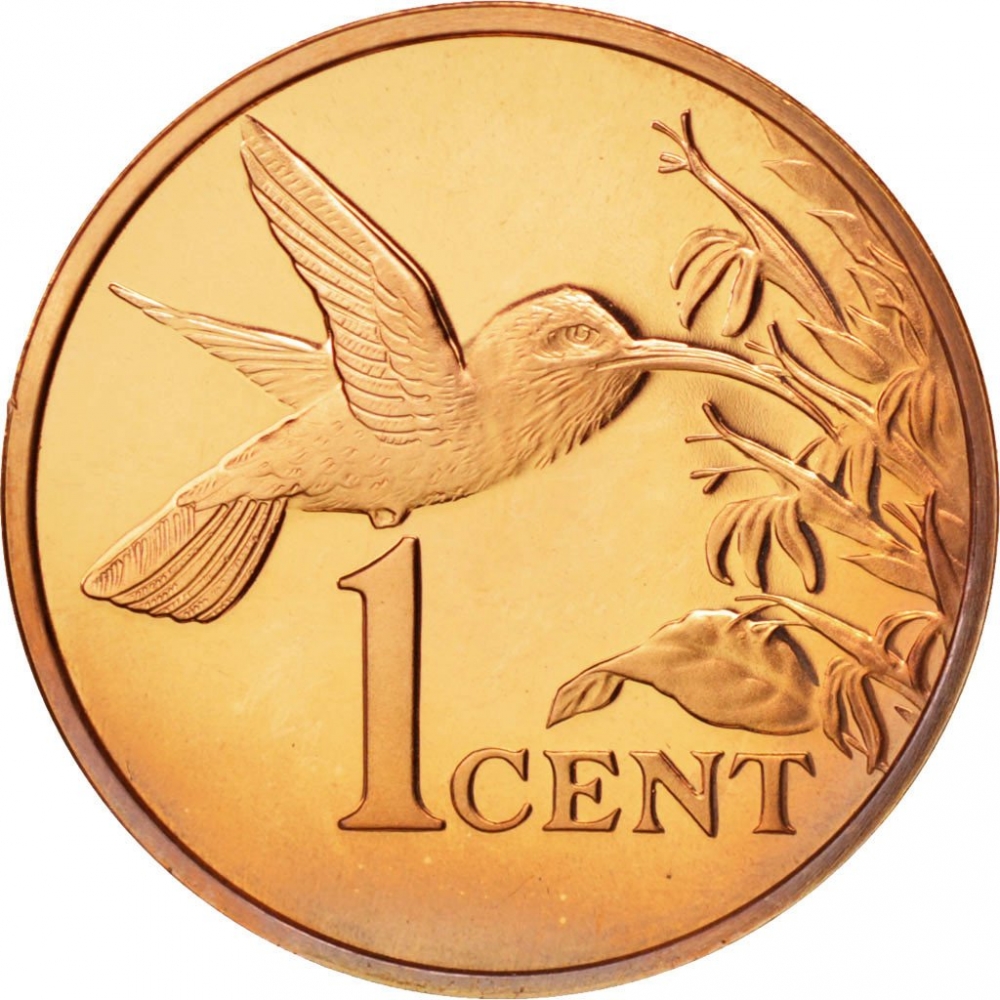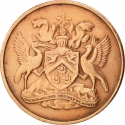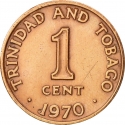Description
The Republic of Trinidad and Tobago is the southernmost island country in the Caribbean.
Obverse

|
Coat of arms of Trinidad and Tobago. Date and mintmark (if any) below.
The coat of arms of Trinidad and Tobago was designed by a committee formed in 1962 to select the symbols that would be representative of the people of Trinidad and Tobago. The committee included artist Carlisle Chang (1921–2001) and carnival designer George Bailey (1935–1970).
The palm tree crest at the top of the coat of arms was taken from Tobago's coat of arms before it was joined in political union with Trinidad. The shield comprises the same colours (black, red, and white) as the nation's flag. The gold ships represent the Santa María, La Niña, and La Pinta: the three ships Christopher Columbus used on his journey to the “New World”. The two birds on the shield are hummingbirds. Trinidad is sometimes referred to as the “Land of the Hummingbird” because 18 different species of hummingbird have been recorded on the island. The two larger birds are the Scarlet Ibis (left) and the Cocrico (right), the national birds of Trinidad and Tobago. Below the Scarlet Ibis are three hills, representing the Trinity Hills in southern Trinidad, which, it is believed, convinced Columbus to name the island after the Holy Trinity. The island rising out of the waters beneath the Cocrico represents Tobago. Below these birds is the nation's motto, "Together We Aspire, Together We Achieve."
REPUBLIC OF TRINIDAD AND TOBAGO
TOGETHER WE ASPIRE TOGETHER WE ACHIEVE
FM
1976
|
Reverse

|
Depicts a hummingbird in flight and a flower that he is feeding on with the denomination below.
Hummingbirds are birds native to the Americas and constituting the biological family Trochilidae. They are the smallest of birds, most species measuring 7.5–13 cm (3–5 in) in length. The smallest extant bird species is the 5 cm (2.0 in) bee hummingbird, which weighs less than 2.0 g (0.07 oz).
They are known as hummingbirds because of the humming sound created by their beating wings, which flap at high frequencies audible to humans. They hover in mid-air at rapid wing-flapping rates, which vary from around 12 beats per second in the largest species, to in excess of 80 in some of the smallest.
|
| Edge |
|
Characteristics
| Material |
Bronze |
| Weight |
1.95 g |
| Diameter |
17.8 mm |
| Thickness |
1.12 mm |
| Shape |
 round
round
|
| Alignment |
Medal
|
| Mints |
Franklin Mint (FM) Royal Mint
|
Related coins
Bronze, 1.95 g, ⌀ 17.8 mm
My Collection
My Exchange
|





